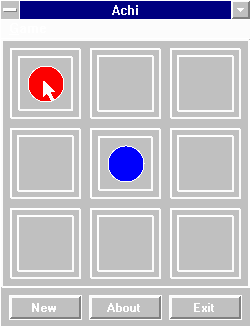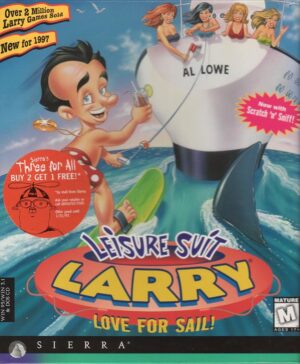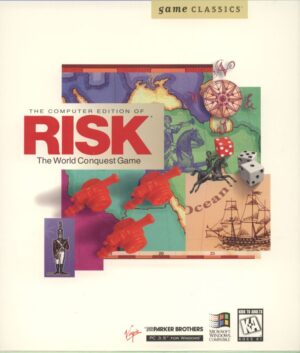Retro Replay Review
Gameplay
Brain Games For Windows offers a diverse collection of seven classic puzzle challenges, each with its own unique mechanics and mental workout. From the strategic tile maneuvering in Achi to the leapfrogging logic of Bastille, the suite caters to a wide range of puzzle enthusiasts. Whether you’re a fan of memory matching in Double Block or the familiar grid-based tactics of Tic-Tac-Toe and Battle Sat, there’s always a fresh twist waiting to push your problem-solving skills.
One of the strongest aspects of the gameplay is the adjustable difficulty and AI settings. In Achi, for example, a simple tic-tac-toe stalemate transforms into a deeper mind game when players can slide existing tiles to break ties. Double Block’s CPU opponent can be set to various skill levels, letting newcomers build confidence before facing tougher challenges. This scalable difficulty ensures that both casual gamers and seasoned puzzle masters find satisfying opposition.
Each mini-game introduces clear rules and well-designed tutorials, minimizing the learning curve. Knight’s 16-move challenge demands careful planning and understanding of knight’s-tour movements, while Jumper’s block-swapping puzzle emphasizes spatial reasoning under simple constraints. The intuitive controls—primarily mouse clicks and drags—keep the focus firmly on strategy, not on deciphering complex interface mechanics.
Replayability shines through varied button patterns in Bastille or different color themes in Double Block, preventing the experience from growing stale. Battle Sat’s classic battleship clone offers a nostalgic head-to-head mode, encouraging friendly competitions with friends or family. The suite’s broad puzzle types mean you can hop from one brain teaser to another, keeping each session fresh and engaging.
Time-attack and score-tracking features further enhance the gameplay loop, challenging you to beat your personal bests or improve completion times. Although these extras are modest, they provide just enough incentive to revisit each puzzle regularly. For anyone seeking a lightweight yet mentally stimulating collection, Brain Games For Windows delivers consistent and varied gameplay options.
Graphics
Graphically, Brain Games For Windows opts for a clean, minimalist aesthetic that puts your focus squarely on puzzle-solving. Each game’s board is rendered in contrasting colors—typically primary hues and neutrals—to ensure clarity and reduce visual clutter. This straightforward presentation is precisely what you want in a puzzle suite: nothing to distract from the logic challenges at hand.
While there are no elaborate animations or flashy particle effects, simple highlight cues and subtle transitions help maintain a polished feel. When you match tiles in Double Block, the tiles fade or flip with a satisfying snap. In Bastille, removing a button triggers a gentle fade-out that makes it immediately clear which elements have left the board. These small touches elevate the overall experience without overcomplicating the interface.
The resolution and layout are optimized for standard Windows screens, with large, easily clickable areas that work equally well on laptops and desktops. However, if you have a very high-DPI display, you may notice slight pixelation in some UI elements. Despite this minor drawback, the bold shapes and color-coding remain effective, ensuring each game is accessible to players of all ages and visual acuity levels.
Color customization options in Double Block let you tailor the palette to your preferences, which can be especially helpful for colorblind players. Unfortunately, this level of customization isn’t universal across all seven games, but the core titles maintain enough contrast and design simplicity to avoid confusion. Overall, the graphics serve their functional purpose admirably and contribute to a stress-free puzzle environment.
Story
As a compilation of abstract puzzles, Brain Games For Windows doesn’t revolve around a traditional narrative or cast of characters. Instead, the “story” is the progression of mental challenges themselves, with difficulty spikes and new mechanics unfolding as you move from one game to the next. This hourglass arc of escalating complexity provides its own sense of journey and accomplishment.
Each puzzle acts like a chapter in a larger volume of brain-training exercises. Starting with the familiar grid-play of Tic-Tac-Toe, you gradually unlock games that require more advanced logic—like Knight’s swap-based strategy or Jumpers’ spatial navigation. In this way, the suite imparts a form of self-guided education, as if you were traversing levels in a minimalist storyline of cognitive growth.
There are no cutscenes, voiceovers, or story-based unlocks, but the subtle progression in puzzle design creates an implicit narrative arc. Achi’s dynamic tile movement solves the stalemate of classic tic-tac-toe, Bastille’s button patterns advance in complexity, and Battle Sat’s integration of Battleship tactics offers a satisfying homage to a storied board game. While not a story in the conventional sense, this curated sequence provides context and purpose to each individual challenge.
For players seeking character-driven interactions or plot twists, the lack of storyline might feel sparse. However, if your primary goal is to sharpen your mind and relish the “aha” moments that come with solving a tough puzzle, the implicit structure here is more than sufficient. The sandbox-like approach lets you create your own narrative of continuous personal improvement.
Overall Experience
Brain Games For Windows delivers a robust package of puzzles that will appeal to anyone looking to exercise their cognitive muscles. Its greatest strength lies in the breadth of styles—from memory and spatial reasoning tests in Double Block and Jumper to strategic grid warfare in Battle Sat. This diversity keeps players engaged through multiple play sessions, ensuring that the brain training never feels monotonous.
While the presentation is concise and utilitarian—without flashy visuals or elaborate storytelling—the core gameplay remains addictive and rewarding. Each mini-game offers bite-sized sessions that fit easily into breaks, commutes (on laptops), or evening wind-downs. The adjustable AI levels and color customizations help tailor the experience to your personal skill level and visual preferences.
The lack of a formal narrative or character progression means the suite won’t satisfy those seeking a cinematic or story-driven journey. Instead, Brain Games For Windows excels as a mental gymnasium, where you pick and choose your workout routines. For puzzle aficionados, educators, or casual gamers aiming to stay sharp, this collection is a reliable companion.
Installation and setup are straightforward, with minimal system requirements and a small download size. Updates are infrequent but rarely necessary, as the offline puzzles remain stable and bug-free. If you’re after a cost-effective way to add a variety of timeless brain teasers to your library, Brain Games For Windows is a compelling choice—offering quality gameplay in a tidy, no-frills package.
Ultimately, the overall experience is one of consistent challenge and mental stimulation. Whether you’re tackling a quick round of Tic-Tac-Toe or wrestling with the 16-move Knight swap, you’ll find satisfaction in each solved puzzle. This collection stands out as a well-rounded suite for anyone seeking to flex their logic skills and engage in thoughtful, entertaining gameplay.
 Retro Replay Retro Replay gaming reviews, news, emulation, geek stuff and more!
Retro Replay Retro Replay gaming reviews, news, emulation, geek stuff and more!









Reviews
There are no reviews yet.